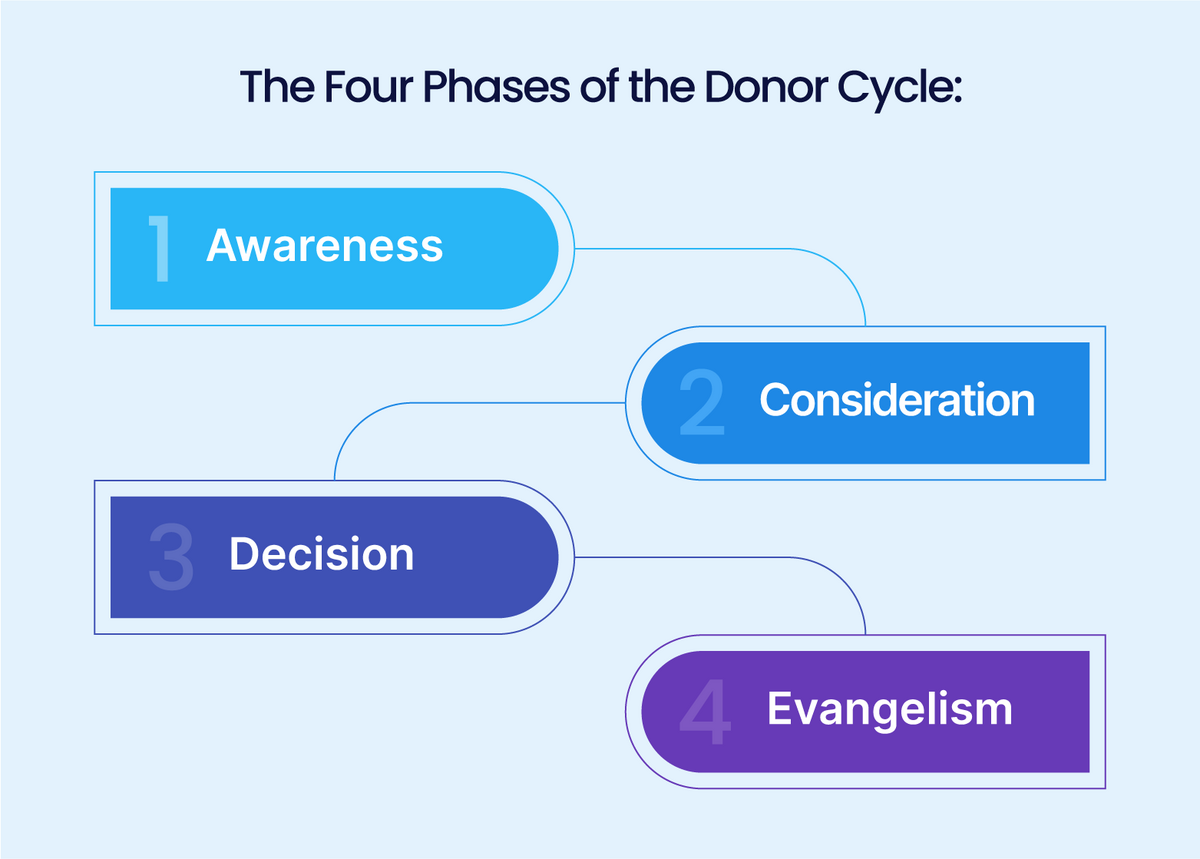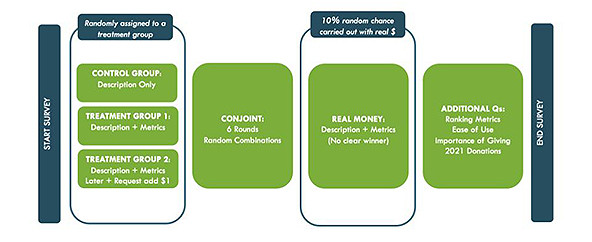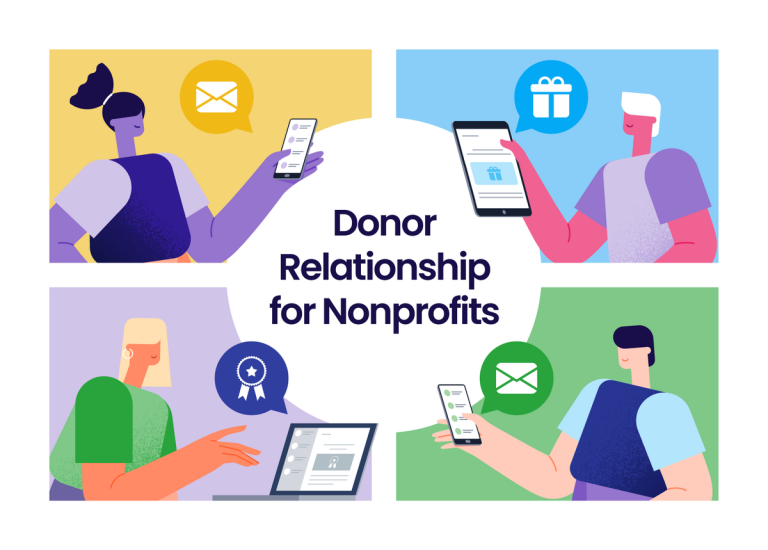“But how do I cultivate such donor relationships?” You might ask.
Today, we’re going to give you the full guide for building a strong relationship with your donors to elevate your organization.
We’ll cover:
- Understanding Donor Relationships
- Navigating the Donor Journey
- Importance of a Donor Stewardship Plan
- The Role of Technology in Managing Donor Relationships
- Biggest mistakes nonprofits make when building donor relationships
- Donor relationships are only strengthened by leveraging technology like Stratly
Understanding Donor Relationships
A strong donor relationship isn’t just about numbers or transactions; it involves creating a deep emotional bond between the donor and your organization. When this bond exists, donors are more likely to remain engaged over time.

This emotional connection can enhance the strength and longevity of a donor relationship, making it key in maintaining robust ties that lead to long-term donor support.
And how is that built?
You can start by building trust via effective donor stewardship efforts.
This involves:
- Transparent communication about how funds are used,
- A robust donor recognition program,
- A seamless donor management process,
- And, important attention to the entire donor experience, from cultivation progressing to monthly giving and beyond.
Navigating the Donor Journey
Understanding your donor journey is key to how you acquire donors. It involves mapping out their path from initial awareness, through consideration and decision-making, all the way to becoming a major donor that contributes to everything from your annual appeal to capital campaign efforts.
Understanding your unique donor lifecycle
The donor cycle can be broken down into four stages:
- Awareness
- Consideration
- Decision
- Evangelism
Each stage needs a different approach to effectively engage donors.
In the first phase of awareness, potential donors discover your nonprofit and its mission. This could happen via social media posts or word-of-mouth recommendations.
During consideration, they learn more about what you do – this might involve reading annual reports or attending events where they can see firsthand how their donations would be used.
The third stage is when a donor makes a decision. Here it’s crucial that nonprofits use compelling stories about beneficiaries as well as clear calls-to-action (CTAs) to encourage giving.
Last but not least comes evangelism; once someone has donated and seen the impact of their gift – ideally through regular updates from you – they become ambassadors who share their positive experience with others thereby attracting more supporters towards your cause. This is how major donors can help grow your donor base and organization!

Leveraging Donor Management Software
Donor management software, like Stratly’s CRM system, provides tools that help track each individual donor’s progress along this journey, providing useful insights on how best to communicate at each step based on past interactions.
It also helps keep all important data organized, making it easier for fundraisers to manage multiple relationships simultaneously without dropping any balls.
Pivoting Your Strategies Based on Donor Data
Remember, not all donors will follow this journey linearly. Some might skip stages or loop back around.
For instance, a solid donor who starts off with a small one-time gift (decision stage) could later become more engaged and interested in learning about your work (consideration), eventually turning into an advocate for your cause (evangelism).
That’s why it’s so important to use the insights you get from software tools like Stratly’s. These tools can really give your strategies a boost.
Importance of a Donor Stewardship Plan
In 2023, new donor counts fell by nearly 20% and new donors gave 34% less than previous years, according to a study done by the Association of Fundraising Professionals. They also found that donor retention increased by barely one percent, as well. It could be the economy or factors outside nonprofit organizations’ control. But, it could also be the sign of a failing donor stewardship plan that isn’t helping improve donor retention rates.
So, what needs to be a part of your stewardship plan? Here are a few ideas:
Thanking donors with meaningful gifts
Thanking donors for their contributions must go beyond just saying ‘thank you’.
A well-crafted acknowledgment letter can be a powerful tool to express genuine gratitude while also reinforcing the impact that their gift will make.
Your message should be personal, specific, and heartfelt – showing an understanding of each individual donor’s reasons for giving. The right words can spark joy in the heart of your supporter and strengthen their emotional connection to your cause.
Even better if it is handwritten and sent with a small, meaningful donor gift.
Fulfilling promises with transparency
When it comes to donor relationships lead with transparency, always.
An essential aspect often overlooked during donor relationship building is delivering on what was promised when they made their donation. Ensuring funds go towards designated programs or initiatives creates confidence among donors about where exactly their money is being spent.
To enhance this transparency further, consider sharing annual reports with all contributors detailing accomplishments achieved through funding – it’s all about letting them see firsthand how much difference they’re making.
Studies have shown that impact reports are one of the top ways to retain your donors.
In fact, 80% of donors, when given the opportunity, chose to donate to an organization that had better impact metrics. So, send donor reports sharing what you’re doing with pride and accuracy, and you’ll see the positive impact on your bottom line.

Planning donor appreciation events
While you don’t want to spend all of your donor’s money on events, think about adding donor recognition to your fundraising event strategy. This could mean a VIP experience at your annual gala or a first look at a new program you’re offering with a donors-only preview night.
Give them exclusive access to your board of directors, your team, and those who you’re supporting so they can get the full picture of your efforts and what they’re supporting. Oftentimes, this is best done with events.
Maintaining connections with donors is an ongoing practice, not something that happens just once. Effective donor stewardship involves nurturing relationships, communicating effectively, and making donors feel valued all year long with a combination of these efforts. It’s the foundation of great donor relations efforts.
Improve donor recognition via social media
When you receive a check for a new playground or pottery studio on your property, take a photo and post it to social media, thanking the donor!
Most donors like to see their names in lights, so do what you can to publicly recognize their contributions. Be sure to ask their permission before, of course.
Personal touchpoints and connections
Have your Development Director or Executive Director call every donor quarterly. Ask questions about life updates (and take notes to put in your donor management software), congratulate them on things you’ve seen them accomplish, and thank them for any recent giving.
You can also use this time to inquire how they can feel better supported and appreciated by the organization. While the purpose is to give thanks, you can also use it as a type of market research to make your donor stewardship program stronger.
Don’t forget to send cards for birthdays or anniversaries, too. Get personal and treat them like a part of the family, because they are.
The key is to ensure these activities are part of a streamlined donor stewardship process. In your nonprofit CRM you should have timelines and action items listed on each account, so you know how and when to engage for success.
The Role of Technology in Managing Donor Relationships
With the rise of digital platforms, technology plays a vital role in managing donor relationships for nonprofit organizations. It also helps organizations plan proper stewardship efforts because their donor database is able to do a lot of the admin and scheduling that they’d otherwise be doing manually.
Utilizing donor management software
A powerful tool like donor management software can be a game changer. This software is designed to manage donor data and interactions efficiently.
This tech solution makes it easy to track your donors’ details – from their donation history, communication preferences, and event attendance to feedback they’ve provided. All these features let you tailor your approach towards each individual donor, making them feel valued and appreciated.

The result? Strong relationships and increased donor engagement which eventually leads to improved retention rates.
Biggest mistakes nonprofits make when building donor relationships
Building strong donor relationships is crucial for the success of nonprofits, but several common mistakes can hinder these efforts. Here are some of the biggest mistakes nonprofits make when building donor relationships:
Unintentionally taking donations for granted
You never want it to seem as if you’re approaching donors solely for financial transactions without building meaningful connections. But when you’re receiving donations daily, it’s hard to track everything if you don’t have the right nonprofit CRM in place to help you with the admin.
So put systems in place with your CRM so you’re not missing out on opportunities to give thanks to those keeping your organization going.
Overlooking donor retention
It’s easy to get wrapped up in acquiring new donors. When in reality, the majority of your donations are likely going to come from annual donors. You don’t want to fall into the trap of focusing too much on acquiring new donors and neglecting existing ones.
Ignoring (or not asking for) donor feedback
Donors want to be heard. And they deserve to be! If you’re not sending out a donor survey at least twice a year, you need to start now. Here are a few questions you can ask:
- How do you prefer to receive updates and communications from our organization? (Select all that apply: email, mail, phone calls, social media, in-person events)
- Which of the following engagement opportunities interest you? (Select all that apply: volunteering, attending events, participating in donor forums, joining advisory committees, other)
- On a scale from 1 to 5, how satisfied are you with our current communication and engagement efforts? Additionally, do you have any suggestions or feedback to help us improve?”
- Looking ahead, are there specific areas or initiatives within our organization that you would like to support in the future? Your insights will guide our planning and priorities.
Donor relationships are only strengthened by leveraging technology like Stratly
Donor relationships, much like a well-tended garden, grow from seeds of trust and emotional connection. From our guide, you should now understand how to build these meaningful relationships.
Keeping your donors engaged with thoughtful acknowledgment letters, a donor wall, quarterly check-ins, among other efforts, shows appreciation for their gifts. It’s all part of effective stewardship.
And let’s not forget technology! Using donor management software helps streamline the relationship-building process – an important aspect in today’s digital age.
The strategies shared here can help boost recurring donations and improve retention rates. They’re practical tools to ensure your nonprofit continues to flourish!
Remember – there is a lot more to a donation than the amount you get in your bank account.
Book a demo today to see how Stratly can help streamline your donor relationship building and more.

